Just a few days ago I got into a discussion with an online teacherpreneur on how to create value. All of us would agree that creating value is a way to spread the word about yourself across the Internet. That much is clear.
Ultimately the value we create will help us establish our authority in the field. This in turn leads to new clients.
But what exactly is value?
From dictionary.com we read that value is that quality of anything which renders it desirable or useful. Again, there is never any doubt that we should create useful materials. However in my conversation I discovered that there can be two kinds of “values” in what we might create. Here’s how I would describe them:
- Value for ourselves.
- Value for others.
Value for ourselves means some advantage that we gain from something. We might write a post and do 90% of self-promotion or we turn a blog post into a sales page or a showcase. Nothing wrong with sales pages, but they are a separate thing.
The post might be too sales-y, but the justification is, “Hey, we’ve got to promote our stuff, right?.” We want to create value for ourselves so badly that we forget to focus on the needs of our readers.
Obviously, we don’t want to come across that way, but it happens sometimes because we’re teachers, and this whole marketing business is tough.
How do #online #teachers create a valuable #blog post? Here's a guide.Click To Tweet
Creating value for others means learning where they need help and being generous at providing it. The help may include your promotion, but it cannot be only about you, or else the *value* will be interpreted as forcing somebody to buy something.
The truth is though nobody wants to be sold to. While each post may and should have a clear call to action (see below), creating value for our readers goes far beyond our own immediate gains. It takes time, hard work, lots of thinking, research, writing, presenting and interacting/perfecting.
Today I want to focus on creating valuable content in the form of a blog post. I’ve been blogging consistently for over 6 years, and I want to share some of these lessons with you, whether you’re blogging, planning to blog or just want to write valuable blog posts that impact somebody’s life.
Since I teach a language, my examples will be drawn from that area, but if you teach something else I want to hear about your experience creating valuable blog posts in the comments.
Above all, I want to discuss the ways you have seen giving value has helped your audience and gained you new customers!
Create Value: Focus
At school I used to have teachers who loved long answers and a lot of details. You ask them a simple question and get a very long and detailed answer about something else. I used to wonder if they could get to the point and focus on the question I asked.
Focus doesn’t necessarily mean short, although sometimes it’s good. Short is great for visual content for instance when you create online courses.
Blog posts can be short or long but you need to focus on the solution of the problem first and foremost. Here’re some more thoughts on focusing your content:
- Write within a specific niche
- Focus on solving 1 problem at a time.
- Emphasize your focus in different ways throughout the post.
When I did my Master’s degree in the US I was (for the first time) introduced to the real paper writing process. In my native Ukraine writing a paper usually meant putting together a collection of quotes and making it 20 pages long.
So if you actually wrote papers with a thesis statement (one main point to share) you know how difficult it is sometimes to stay focused because you tend to be carried away in all different directions.
I used to write my thesis statement in 3 simple words and stick it to the screen while I was typing. That kept me focused.
Focus on that main message while you write. Ask yourself, all the time, can this piece of information be summarized in 3 simple words? If a reader were tied up and only had the time to read a half of the post, would they get the same 3 simple words?
Focus is valuable because it helps people retain the information better.
Create Value: Simplicity
Simple language is the way to go. When I first started out as an online teacher I would write posts for Russian speakers. Initially I thought my posts should be in English since that’s how they would learn, right?
Not quite.
At some point I looked at the statistics and realized that even some of my most “helpful” posts were not popular because they were in English. So I switched to writing in Russian, and I did that for a number of years with higher page views.
Simplicity is knowing where your audience is and meeting them where they are. This is tough because as teachers we know so many things we forget what it’s like not to know. That is called “the curse of knowledge.”
Do you remember the first time you heard a new language that you’d been studying for so long? I remember that feeling in 1997 when I first interacted with a “live” native speaker after months of learning English using a textbook.
Now that I’ve been using English in different settings I have to constantly remind myself what it was like then. What was it like, not to understand? not to know? not to speak? having confidence issues?
I know some cultures view learning as something academic, so immediately people think that if you write something for students it has to be proper, i.e. difficult to understand. A successful teacher blogger however will create valuable content in simple language.
Create Value: Depth
By “depth” I don’t mean that you have to write a PhD dissertation on a specific topic (remember, simplicity?). But the post has to have a deeper and a more unique approach to the subject than other bloggers and textbooks do.
Which means you will have to do some looking around to see what’s been said on this subject.
So let’s say you decided to write a post to answer one of the questions that your students generally ask. Going to your students for “inspiration” is a winning strategy because you address what they want to hear not what you think they want to hear.
Below are two short scenarios that in my opinion make a post “OK” or “great.”
Scenario 1: OK.
Your student has difficulty using the Past Simple tense while speaking. Since your focus (and niche) is *Grammar* (very broad, but I’ll use it as an illustration) you decide to write a post about using the Past Tense in English. You’re focused and you try to break it down in simple language using a lot of examples. So far so good.
But many teachers stop there. In fact, I used to stop there, too, which made my posts OK, but not really actionable.
So what I had better examples than some textbooks? So what I explained faster than other people? How can this post be truly memorable, actionable, deep and unique?
Scenario 2: Great.
You get to know your audience to discover what books they read, music they listen to and what they enjoy doing. Is there an overlap with what you enjoy writing about (there’s nothing worse than writing on the topic you hate)?
Then you find those lyrics, that short clip, a story or a topic that attracts your students. You start out your post with it. Don’t start it out the way textbooks do, Today I would like to write to you about using the Past Simple Tense.
Instead, start out the post with this catchy introduction, something memorable. Since you’re writing about the use of the Past Tenses you may use short, authentic stories from the news, an autobiography, a movie clip, etc.
PRO tip 1: keep the clip under 1 minute and upload it on your channel before you share it on your post.
Then you can go into the actual blog post, remembering about the importance of focus and simplicity, but instead of using other examples use the phrases you found in the passage you have chosen and create double value by exposing your students to authentic language.
PRO tip 2: create a worksheet or a check list that goes with the post as an attractive bonus and an invitation to sign up for your weekly tips.
***
Want to nurture and grow your community through the content you create? Check out my book:
Create Value: Call to Action
Since for all of us blogging is a part of our professional routine, ideally we should think of creating the ultimate value. In other words, our blog should give our readers an option of receiving the ultimate value from us in our paid program/course/class.
The “giving of the option to receive ultimate value” is also known as a call to action (CTA).
Most teachers struggle with the CTA, I know I did. I used to get into 2 extremes: either no CTA at all (’cause I don’t want to sound too sales-y) or the very generic one “join my free trial lesson” that (from my conversations with other teacherpreneurs barely brings any students).
To recap, creating value for your clients begins with the free content that invites people to learn more and stick around. “Free” doesn’t mean useless or unnecessary. To attract our dream clients, we invite them on a journey, and a valuable blog post is a quick overview of the wonderful services we can offer. How is your free content connected to your paid services? Are they separate or is there a continuation from your blog post >> sign-up >> newsletter >> free materials + events >> small product >> bigger product/service? Please share in the comments!
The post was updated in April, 2021.


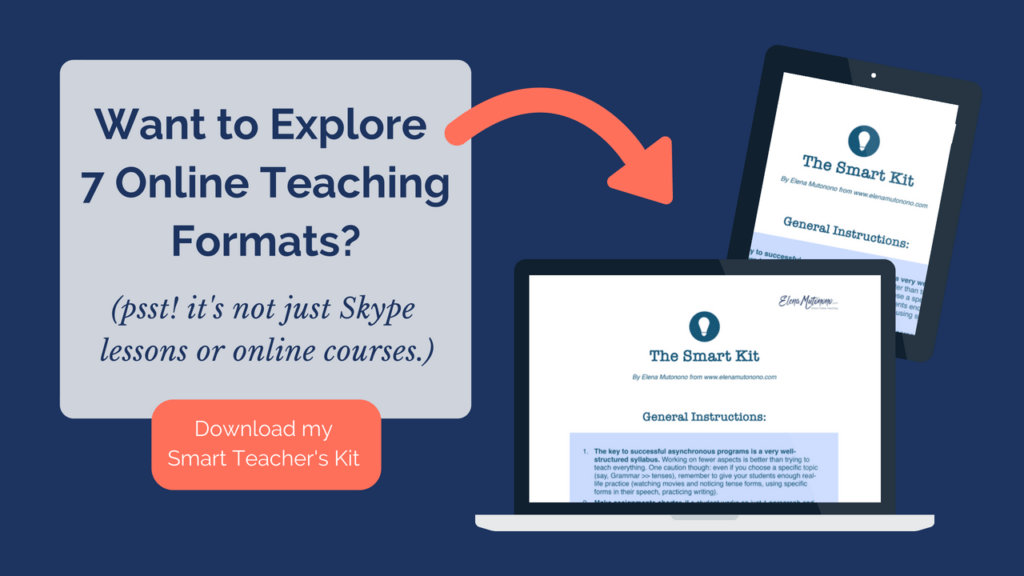
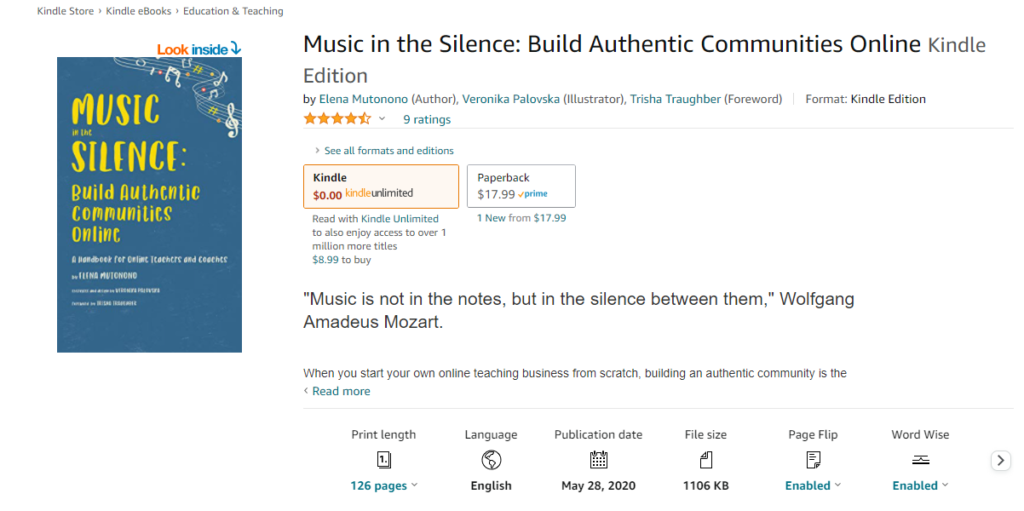
 Welcome to my nook where *Big Magic* happens. My name is Elena Mutonono, I help small business owners package their services as digital products and sell them online. I want you to work smarter, not harder. Increase your impact beyond your current face-to-face clients. Grow your business as you reach more people all over the world.
Welcome to my nook where *Big Magic* happens. My name is Elena Mutonono, I help small business owners package their services as digital products and sell them online. I want you to work smarter, not harder. Increase your impact beyond your current face-to-face clients. Grow your business as you reach more people all over the world.
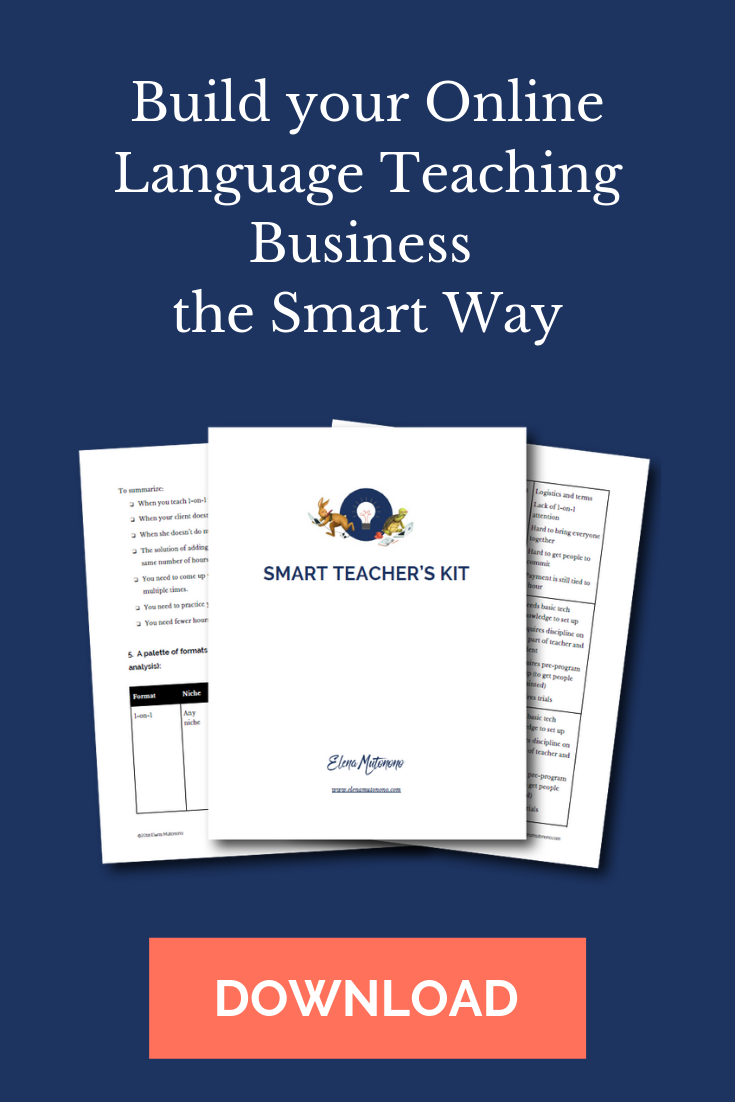


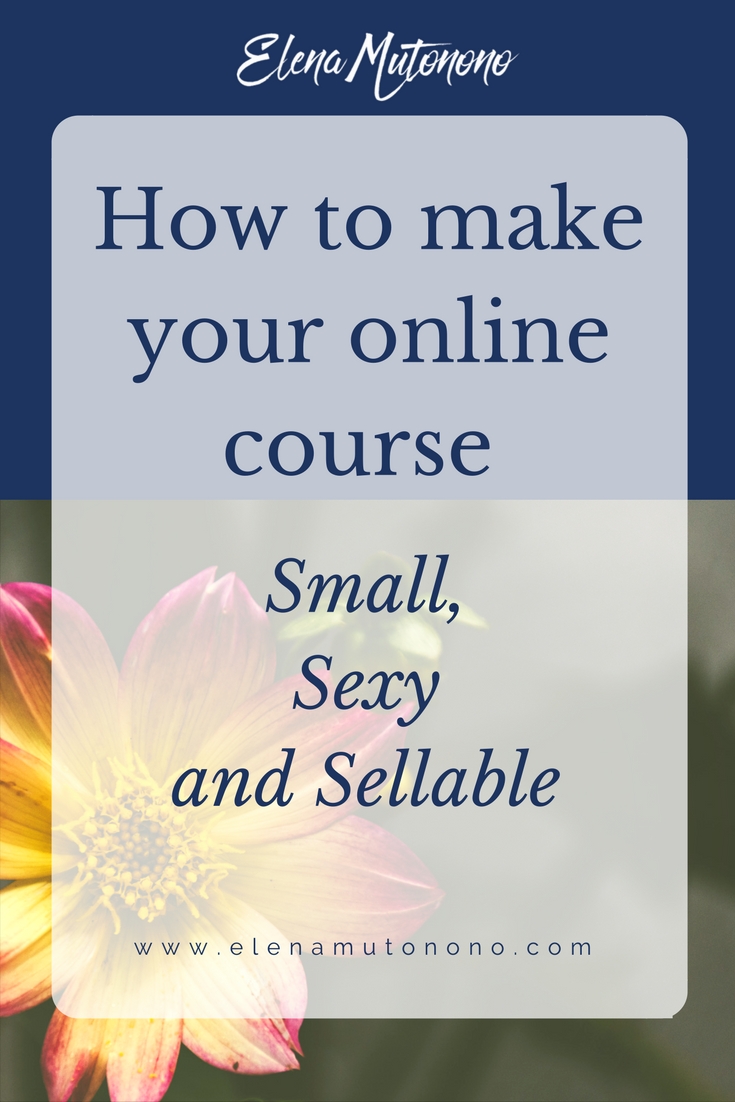

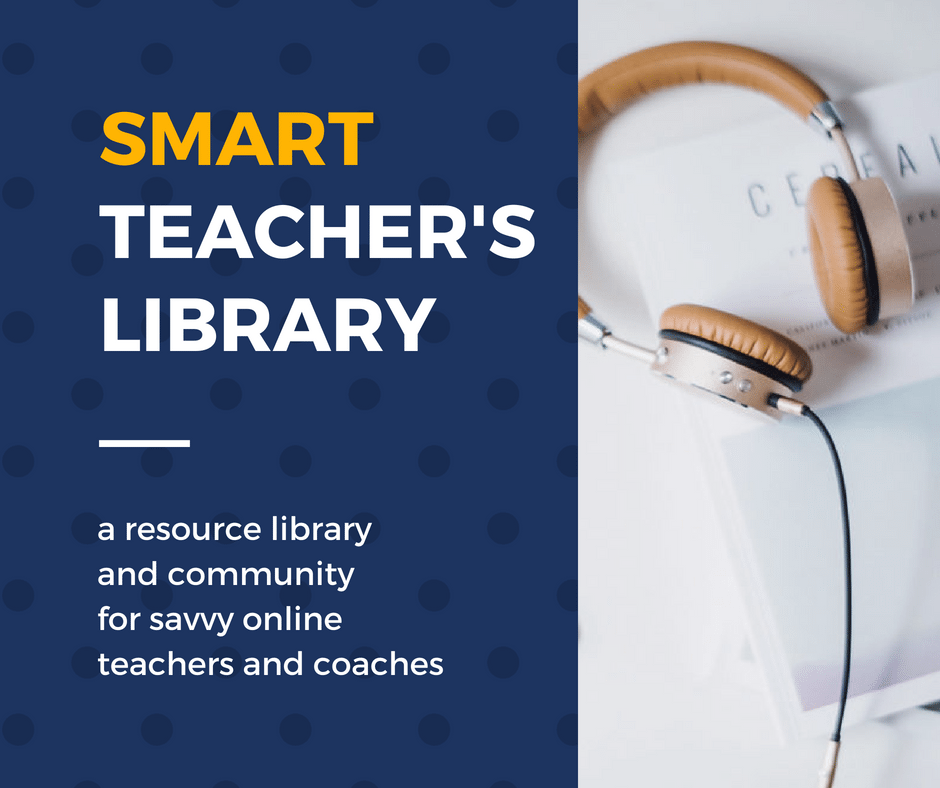
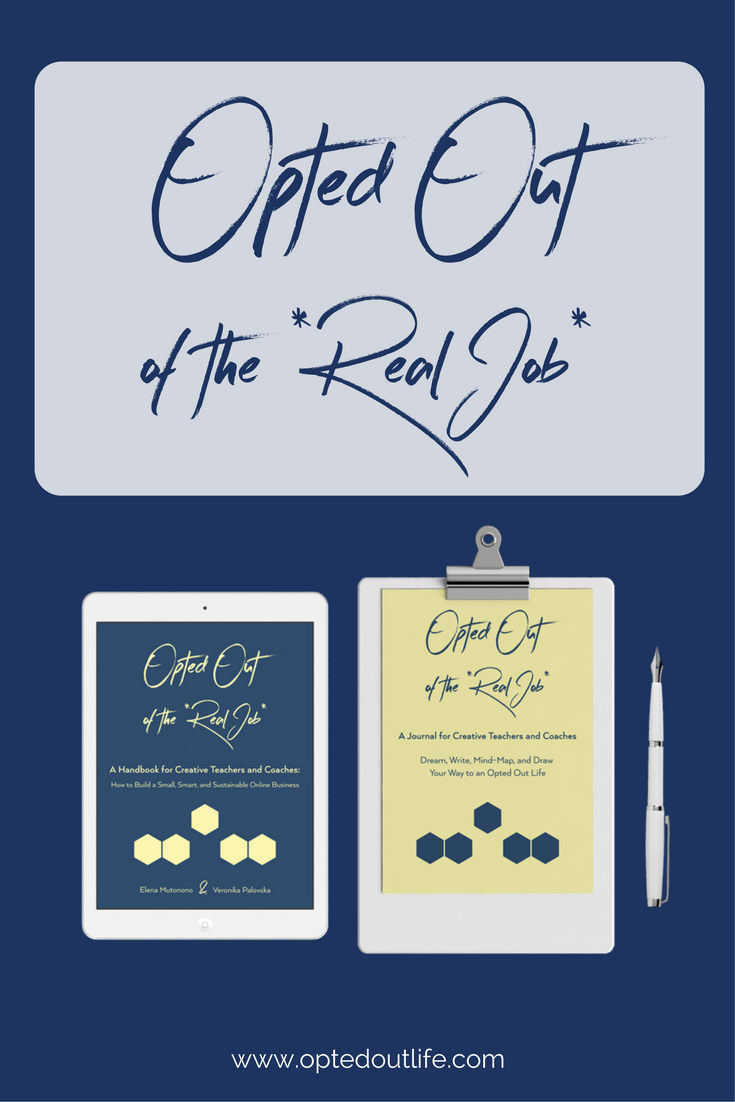

Love this Elena. If students just want a textbook explanation of a grammar point, then they can open up one of Raymond Murphy’s books. If they love your approach, your personality and your angle on learning because it connects with them and their interests, then they’ll come to you – simple as!
Thanks, Cara! Creating another textbook online is exhausting.
Hi Elena, it is interesting you say to get rid of the terminology. I tried to turn this on its head in the following blog post and use it as a vehicle for learning vocabulary in addition to the topic of the article. I got the idea for the article and then sent it to someone on fiverr.com who expanded it for me. Unfortunately, the words he used were quite advanced. I was beginning to think I would have to rewrite it entirely; but then I thought – why not keep most of them and offer some English language learning along with the blog article. I’ve used tabs with definitions of difficult words in two places, to keep them from distracting the reader from the real message. All in all, the students I have asked have loved this post. I hope this will add some value to any of your readers: http://letstalkielts.com/wp/2016/06/05/sleep-deprivation-could-it-reduce-your-ielts-score/
Katey, I think you also need to know your audience, and in your case those words are quite appropriate for the people you’re working with. I didn’t find your post too technical, as you weren’t using the jargon and the phrases that only select few know. You were using the language that your audience should know, and if they didn’t you turned it into an unconventional vocabulary exercise, much like the example I talked about in the post. I actually find your post helpful and useful, so I will definitely share it with my audience next week. And by the way, an important point about a valuable post for me for instance is also a) I would re-share it myself; b) I would ask the author to do a guest post for my blog. Granted, it’s important to know your audience and so I probably wouldn’t ask a math blogger to write for me (which doesn’t undermine her value), but I’m talking of course about a similar niche. If I were to take the responsibility on myself not just to share (which is a great compliment), but to ask you to write for me (which I did in the past, and it was an excellent resource) then it’s a sign that the person can create amazing value for readers.
I really love this post, Elena ! So helpful and I love how you stress the fact that there is constant work to be done.
About the burden of knowledge, I think one of the takeaways from my TBI is that most grammar posts and books are written for rocket scientists.
I often have to brainstorm with my students to figure out what is expected from us in many grammar exercises. And my students are people that work in universities and like grammar !
As teachers, we simply forget that most people just don’t know the jargon or are simply unaccustomed to grammar exercises and are scared away.
A very engaging post Elena. Love it. It is very informative.
Call to action (CTA) is also my trouble area. I don’t like to be very obvious as well as I want to put my message across. Right now I don’t say anything and just post and leave it to the readers to decide.
I agree with you that students are not very fond of grammatical explanations and terminologies in books. They look up to the teachers for a simple and easy to implement explanation.
Hema, thanks for your comment! Here’s a quote by Antoine De Saint-Exupery, “If you want to build a ship, don’t drum up people to collect wood, and don’t assign them tasks and work, but rather teach them to long for the endless immensity of the sea.” As language teachers, we’re good at giving information, but we don’t know how to kindle that longing for the “endless immensity of the sea.” We’re good at inviting people to join a free trial, but we can’t explain what’s in it for the client and how taking this trial will not just give them more information, but enrich their lives. We need to learn how to do that, and it’s not that easy. Thanks for stopping by!